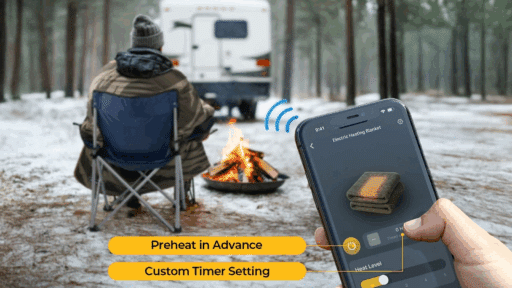Smart devices feel effortless because hidden mechanical systems do the heavy lifting. Tap a screen, and components you never see convert tiny signals into precise motion. Open a cabinet with a touch, and hardware inside glides into action with calm reliability. The magic reads as software, yet the physics underneath makes the experience possible.
Modern design favors silence, speed, and accuracy. That means compact motion systems that fit in tight spaces, consume little power, and operate for years without drama. The result is a quieter class of mechanics that turns code into movement across homes, offices, and vehicles.
From Code To Motion – The Role Of Micro Mechanics
Every seamless interaction starts with a translator between electrical intent and physical action. Motors spin. Gears reduce speed and multiply torque. Linkages guide motion along a precise path. In many products the workhorse is an actuator – a device that converts energy into controlled movement. Linear units extend and retract to lift, tilt, or slide. Rotary versions turn shafts with timed accuracy. Voice coil designs deliver millimeter scale strokes that feel instant.
These systems succeed when they are predictable. Designers choose stroke length, load rating, speed, and duty cycle to match the job. Quiet operation matters as much as raw force because most devices live close to people. That drives the shift toward brushless motors, fine-pitch screws, and sealed mechanisms that reduce wear and hum.
Tiny Movers With Big Impact
The smallest motion parts shape daily experiences more than most users realize. Miniature linear stages refocus camera lenses. MEMS mirrors steer light in lidar. Micro pumps meter droplets in health sensors. In furniture and architecture, compact lifts raise screens from cabinets and slide panels flush with walls. In all cases, precision plus repeatability turns a neat demo into a product people can trust.
Power management sits alongside mechanics. Drivers modulate current to control acceleration curves, which keeps movement smooth and extends component life. Smart sleep modes reduce idle draw, so battery devices last longer between charges.
Haptics, Quiet Lifts, And Soft Starts
Feel is part of function. Haptic modules provide subtle taps that confirm a press without sound, useful in shared spaces where audio cues distract. In kitchens and offices, soft start and soft stop profiles make motion feel gentle rather than abrupt. Sit-stand surfaces rise at a steady pace and settle without wobble. Cabinet systems close with a quiet pull that reads as quality.
A short checklist captures best practices for human-centered motion:
- Match speed to task. Fast for travel, slow for final alignment.
- Shape acceleration and deceleration to avoid jolts.
- Keep noise below conversation level so systems fade into the background.
- Design for failure modes – manual overrides, safe stops, and clear status.
- Route cables and power cleanly to protect moving parts.
- Test under real loads and temperatures, not just lab conditions.
Where Motion Hides In Plain Sight
Smart homes lean on motion to feel responsive. Shades track the sun with small lifts that sync to schedules. Projectors adjust focus and keystone with internal stages. Adjustable counters and beds shift height to fit users throughout the day. In hybrid workrooms, compact lifts re position screens and lights for calls, then stow gear to keep rooms looking calm.
Vehicles use a dense stack of motion systems. Active vents tune airflow. Sensor arrays deploy and retract. Seat frames adapt to posture during long drives. The same principles appear in medical carts, lab automation, warehouse bots, and retail displays. Each setting demands different profiles for speed, noise, and durability, yet the core mechanics repeat with new packaging.
Materials, Seals, And Long Life
Longevity depends on details you never see. Hardened steel or ceramic bearings stay true under load. Self-lubricating polymers lower friction and resist dust. Bellows and gaskets seal out moisture. Encoders track position without drift, and limit switches stop travel at the exact point every time. Coatings fight corrosion where humidity or food acids live, while thermal design keeps motors cool during long cycles.
Serviceability protects investment. Quick-release mounts let installers swap parts in cramped spaces. Connectors are key to preventing wiring errors. Clear labels and cable maps cut downtime. When products are built to last for years, small engineering choices save thousands of quiet moments from failure.
Why The Best Systems Feel Like Nothing At All
The measure of good motion is often absence – no buzz, no wobble, no heat, no hesitation. Devices respond as if the action were built into the material itself. That is the goal behind today’s compact motion technology. Designers tune speed curves, damp vibration, and hide mechanisms so users experience intent rather than machinery.
As homes and workplaces add intelligence, the quiet backbone remains physical. Invisible motion carries panels, lenses, lights, and screens to the right place at the right time. When done well, the only thing people notice is that everything works, and keeps working, day after day. That is the promise of modern motion – compact, precise, and ready to turn ideas into action without stealing the scene.







